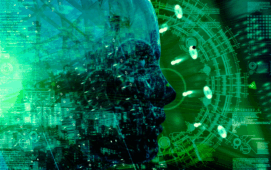Conducting a simple real-time statistical analysis of financial market activity does not necessarily require “sophisticated AI or machine learning,” says Guy Warren, CEO of ITRS, an application performance management and big data analytics provider.
The purpose of conducting such an analysis is to determine when a circuit breaker kicks in to catch and stop algorithmic trading activity that has exceeded volatility limits, whether that halt of trading was warranted, or what caused it. ITRS real-time monitoring and analytics tools let it act directly on a client’s behalf, triggering a “kill switch” or “pause,” so people can manually investigate relevant trading and market data, Warren explains.
Regulators are trying to get greater control and specificity around the use of such sudden stops of market activity, adds Warren.
“Regulators are right to push for firms to have the ability to catch fluctuations and pause activity,” he says. “They increased the number of liquidity venues subject to a requirement to catch fluctuations — in response to a very large OTC presence which they thought might be manipulated.”
The regulatory push is driving more interest in implementing circuit breakers, but regulators’ wishes appear to now be better timed. Technological capabilities now make it possible to monitor ticks for 1 million instruments coming from different asset classes and regions, in a manner that was impossible four years ago. As a result, the position of some regulators that firms ought to be able to monitor all the instruments they are dealing with is now feasible when it wasn’t before, Warren explains.
Better technology makes it possible for computers to check market news that is triggering extreme price changes and evaluation if those fluctuations are genuine, he observes. “Telling if what’s happening is right can be done cost-effectively,” says Warren. “That’s not only on liquidity venues, because they have a matching engine or it’s not too hard to build one in, but on trading venues, it is possible. Most regulation will come in on trading venues, because that’s the safest place to try to catch [an unjust fluctuation]. The trading venues are trying to stop participants from putting bad trades or rogue data into the marketplace.”
Subscribe to our newsletter




